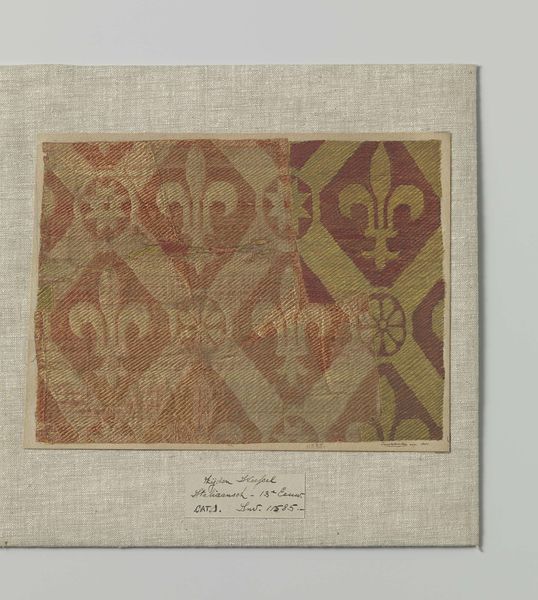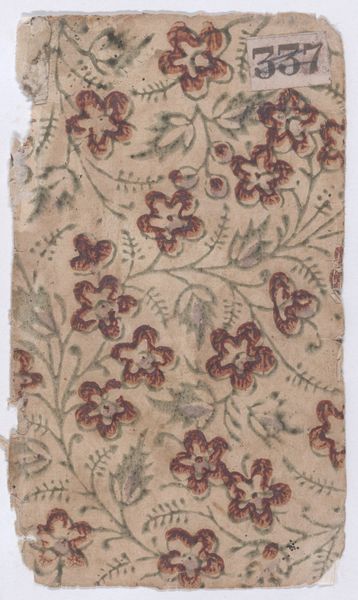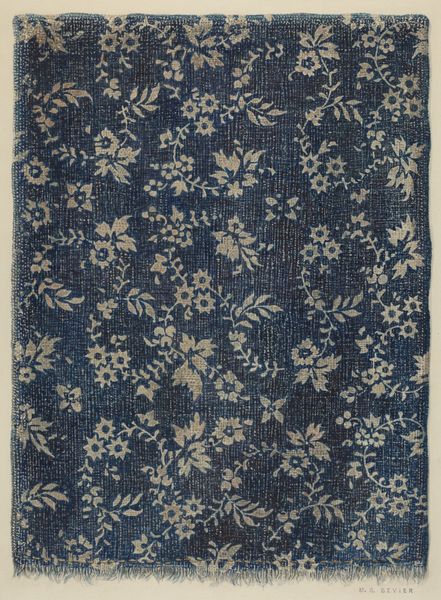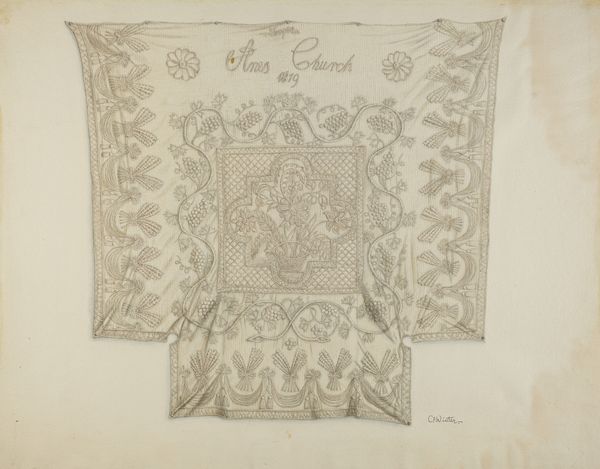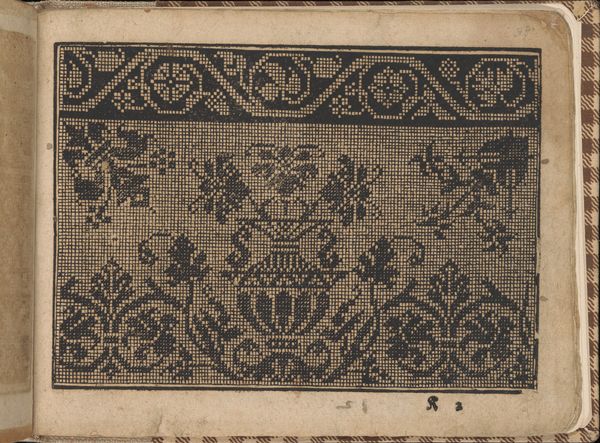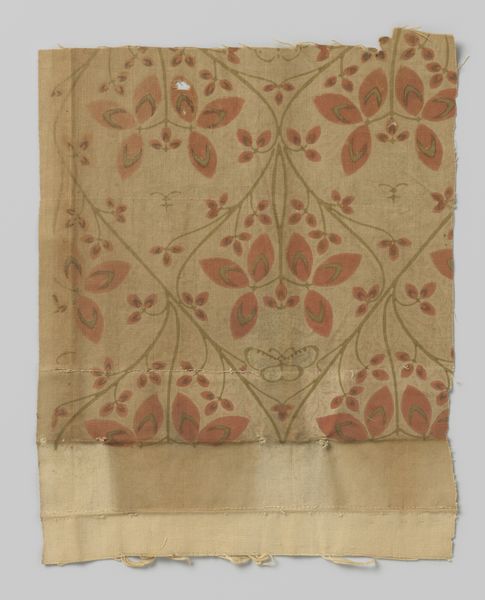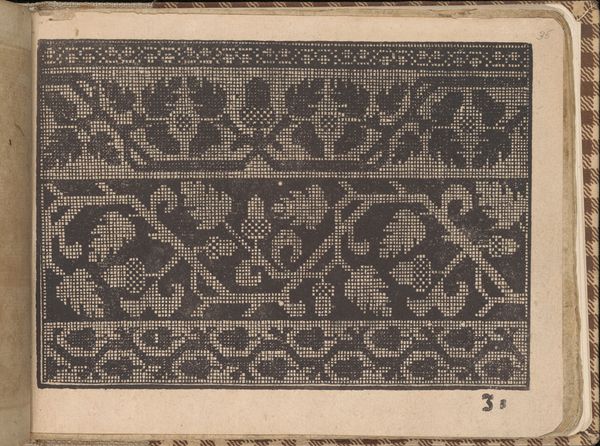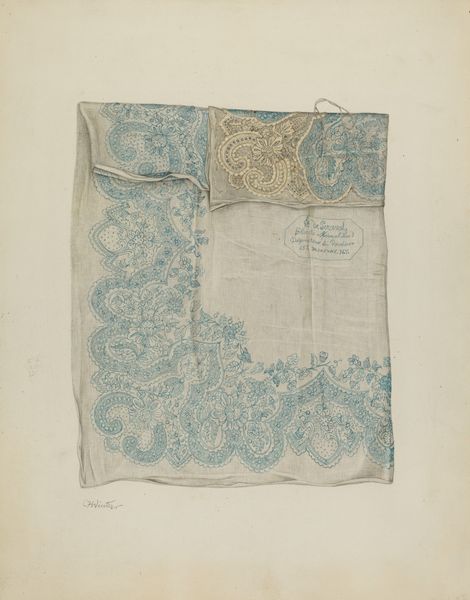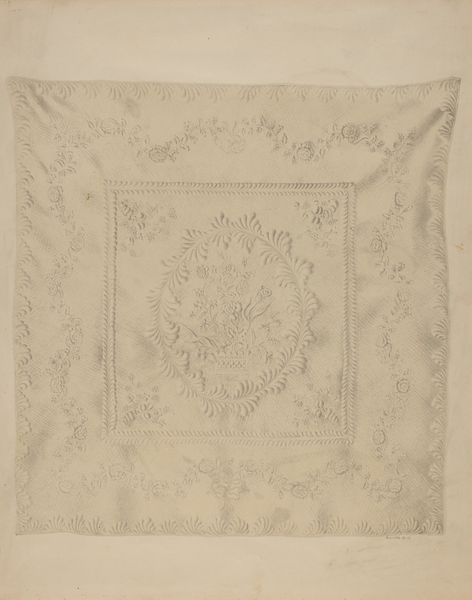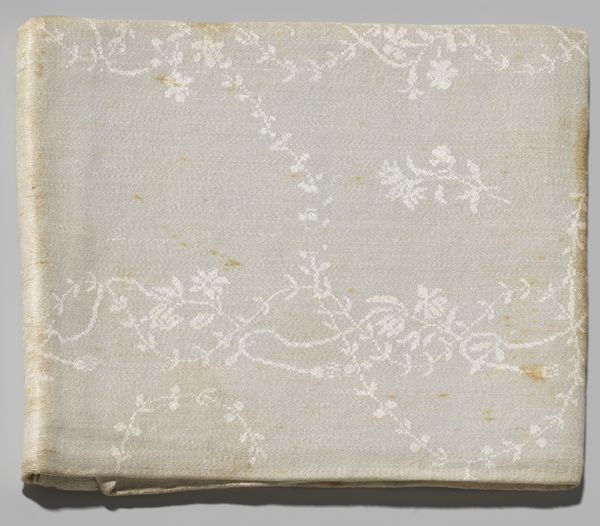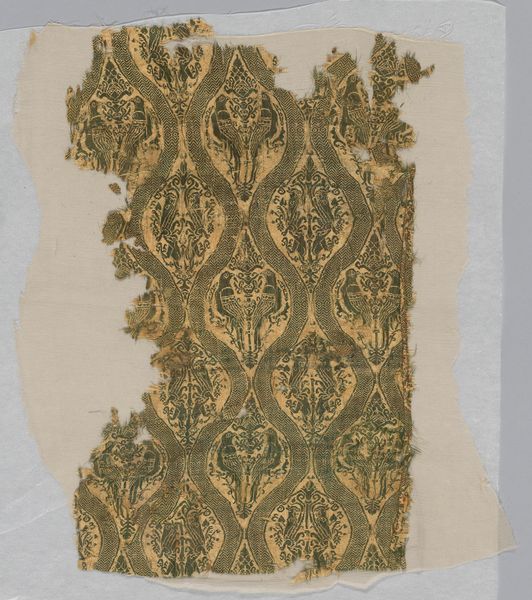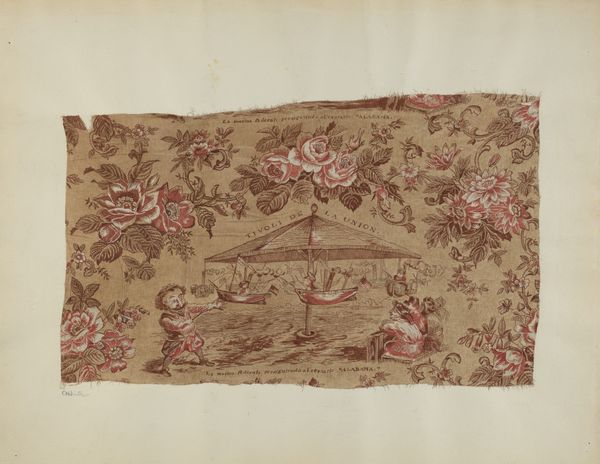
fibre-art, weaving, textile
#
fibre-art
#
medieval
#
pattern
#
weaving
#
textile
#
coloured pencil
#
decorative-art
Dimensions: height 11 cm, width 11.5 cm
Copyright: Rijks Museum: Open Domain
This small fragment of blue samite with a gold fleur-de-lis pattern was likely made in the 13th century by an unknown weaver. At this time, textiles were not just decorative; they were powerful indicators of status, wealth, and identity. The fleur-de-lis, a stylized lily, had become a prominent symbol of French royalty, signifying power and divine right. This fabric would have been used by someone of considerable status, reflecting the hierarchical structure of medieval society. Consider the labor involved in creating such a piece – from the cultivation of raw materials to the intricate weaving and application of gold. Imagine the touch and feel of the samite, a luxurious silk fabric, against the skin. How did the experience of wearing or using such material shape one’s self-perception and interactions with others? This fragment speaks volumes about the socio-economic and cultural values placed on exclusivity and the visual representation of power. It reminds us of the personal and political narratives woven into the fabric of history.
Comments
No comments
Be the first to comment and join the conversation on the ultimate creative platform.
